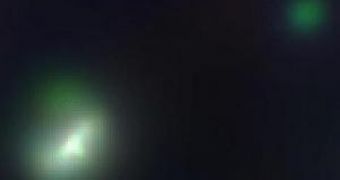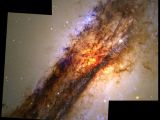Though the respective area of sky - where the new X-ray source was discovered - had been surveyed back in 2003, data showed that it hadn't been there at the respective moment. In March of last year, the Chandra X-ray Space Telescope, scanning the general direction of the galaxy Centaurus A located about 14 billion light years away in the Centaurus constellation, detected a powerful X-ray emission, originating in the heart of the galaxy.
Scientists are now trying to understand what kind of interactions would be able to trigger such events in relatively small cosmological times. A even more weird fact is that, though these kinds of interacting objects are thought to be incredibly rare, this is the second such event taking place in the same galaxy, suggesting that the model describing stellar birth and evolution is not yet complete, and cannot account for many of the observed effects during the supernova stage of massive stars.
These X-ray light emissions are associated with binary star systems, which almost always contain a black hole companion, which could account for the spectrum of the light emitted. According to Gregory Sivakoff from the Ohio State University, the X-ray emission seems to be followed by a particle jet, extending more that 13,000 light years into space, pointing towards multiple directions.
The general belief is that objects similar to the newly discovered X-ray emitter, dubbed CXOU J132518.2-430304, might have existed in the galaxy long before the discovery, generally emitting low amounts of X-ray light and could have enhanced its brightness only recently. The binary system might have originally been composed of two stars, which evolved over time into a massive star and a much smaller one. As the massive star burned its hydrogen fuel at dazzling speeds, it could have quickly went supernova and might have suffered a gravitational collapse, thus turning into a black hole.
Lately, the powerful gravitational pull of the black hole could have stripped large quantities of gas from the companion star and formed a large accretion disk of hot ionized gas, that emits high energy X-ray light as it orbits the black hole. The explanation is relatively simple and widely accepted, however the problem is that this is the second such emission observed in the same galaxy in relatively small time. If the theory is correct, then we should be able to view more such events in other galaxies as well.
Nevertheless, until further observations, the theory remains untested. New understanding in how binary star black hole systems evolve is needed before making hazardous assumptions. Astronomers hope that the comet chaser Rosetta spacecraft will be used in order to study other galaxies with black holes, such as the Centaurus A galaxy, because it is so close to the Milky Way.

 14 DAY TRIAL //
14 DAY TRIAL // 
